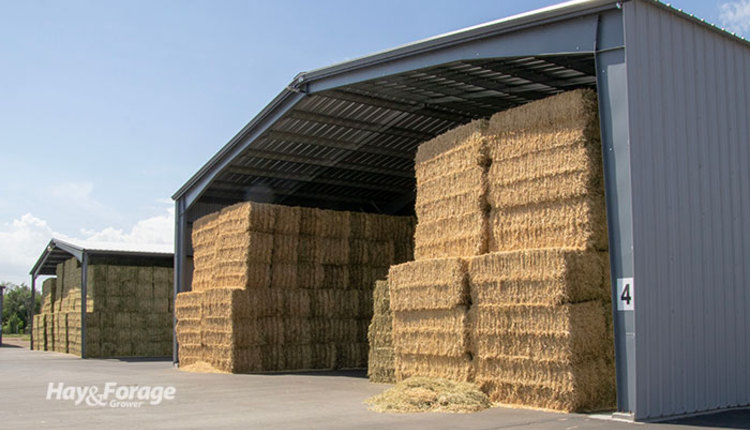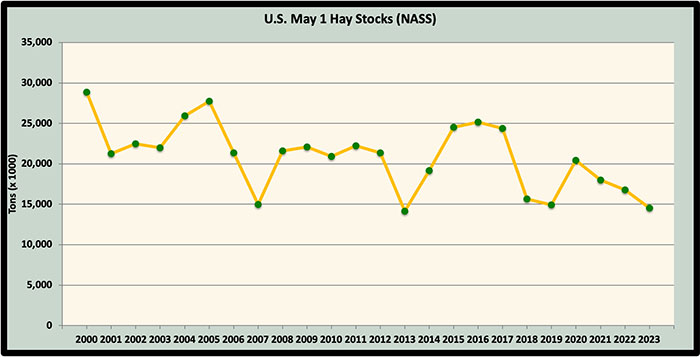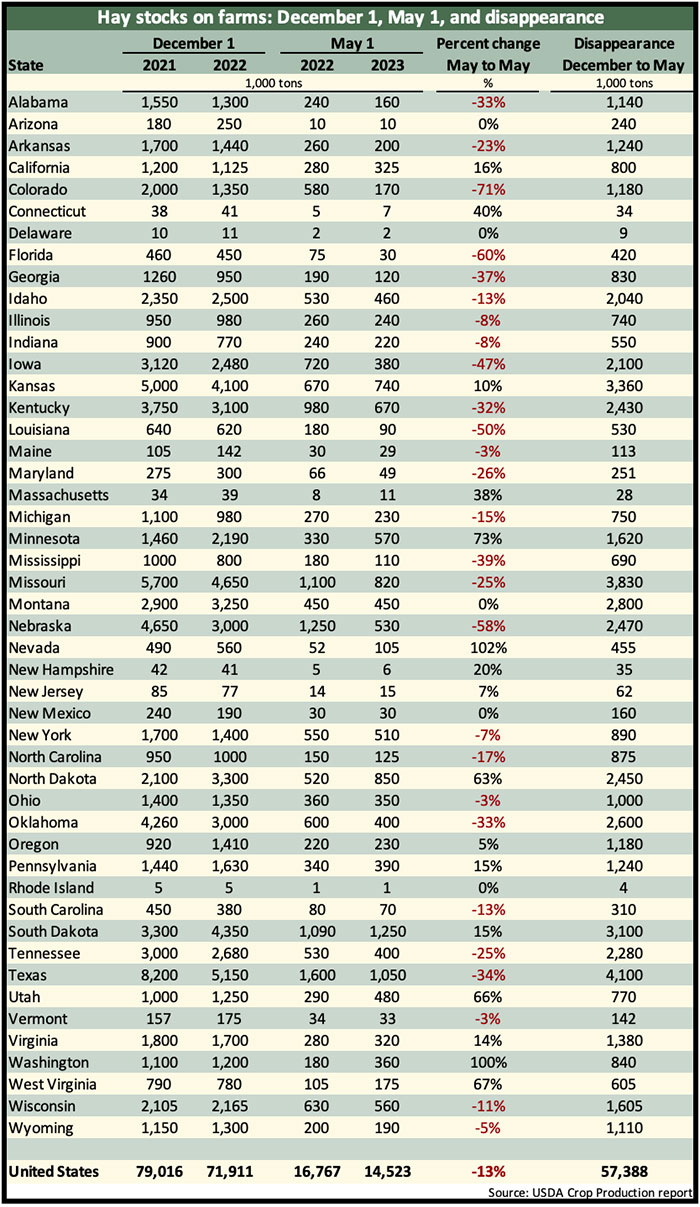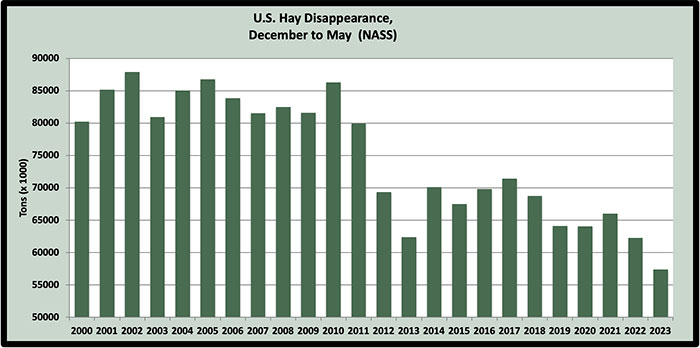
Inventory in U.S. haymows on May 1 shrunk by 13% from a year ago. Compared to May 1, 2020, spring hay stocks are down 29% or 5.9 million tons.
Based on USDA’s Crop Production report released last week, May 1 hay stocks dropped by 2.2 million tons from a year ago. This follows a 7% decline in May stocks from 2021 to 2022 and a 12% drop from 2020 to 2021.
Hay stocks currently stand at just over 14.5 million tons. This past December, year-over-year hay stocks declined by 7.1 million tons.
The recent May 1 hay stocks estimate is the lowest we’ve seen since 2013 when the nation’s hay inventory totaled 14.15 million tons.

Some of our largest hay-producing states had significant year-over-year May 1 stock declines (see table below). Those with some of the largest losses include:
Colorado: down 71%
Nebraska: down 58%
Iowa: down 47%
Georgia: down 37%
Texas: down 34%
Oklahoma: down 33%
Conversely, there were also some major hay-producing states with significant inventory gains. This group included:
Nevada: up 102%
Washington: up 100%
Minnesota: up 73%
Utah: up 66%
North Dakota: up 63%

Hay disappearance
Hay disappearance (primarily feeding) between December 1, 2022, and May 1, 2023, totaled 57.4 million tons. This was about 4.9 million tons lower than the previous year and set a record low hay disappearance (see graph). Previously, the lowest hay disappearance occurred between December 2012 and May 2013, totaling 64.4 million tons.

A new normal has developed in terms of hay that moves out of the barn from December to May.
Prior to the 2012 drought year, disappearance from hay barns and stacks was always in the 80 to 85 million tons range. Since 2012, it’s been rare to have a year where disappearance exceeded 70 million tons. During four of the past five years, hay feeding has been under 65 million tons.
What happens now?
The current hay stock numbers are just one of many reasons for the recent run of historically strong prices; however, there is justification to think that hay prices might decline (or at least hold steady) from their current level.
The most compelling reason to think that prices have already passed their peak is weather. A good share of the West is flush with moisture going into the 2023 growing season, which wasn’t the case last year. Also, more moderate weather is expected with the retreat of La Niña conditions that have plagued the U.S. over the last several years.
We are also seeing a moderation from record-high commodity prices. This makes hay-competitive feeds cheaper. Although beef prices are expected to remain strong in the foreseeable future, milk prices are coming down. Dairy farmers, at least in the short term, won’t be friendly consumers for high-priced hay.
Hay crop input prices have gone up substantially in the past year and a half, but those, too, are starting to subside. Many fertilizer products are down 30% from their previous highs. Still, hay growers will need to be diligent in knowing their costs of production.
Hay export volumes during the first quarter of the year are down about 30%. Hence, competition for Western hay won’t be as fierce as what we’ve seen in recent years.
All totaled, it’s reasonable to expect that 2023 hay prices will be moderate. In many areas, they already have, with top-quality hay being down $40 to $50 per ton from a year ago.
Finally, let’s not forget the two hay market mantras that always hold true. First, high-quality hay always sells for a premium price and costs no more to make than poor-quality hay.
Second, hay markets are largely a regional phenomenon. Local weather conditions and predominant enterprise types (dairy, beef, or equine) will ultimately dictate the demand and price for hay.

